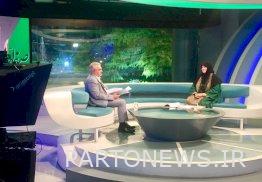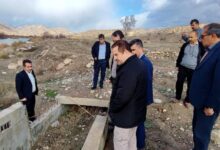Removing export barriers is the key to the prosperity and development of handicrafts/”Handicrafts” is the result of our historical identity, taste and intelligence.

According to the report of Aria’s Heritage reporter, Maryam Jalali, Vice President of Handicrafts and Traditional Arts – Wednesday, June 17 – while appearing on the live program “Saf Aol” on Khabar channel, stating that handicrafts are considered to be one of the elements of our identity and the result of our historical taste and intelligence, she added: memory and The narrative of the journey is formed through handicrafts and its roots lie in cultural heritage.
Referring to the family-oriented nature of handicrafts, he continued: Handicrafts are the manifestation of every climate, which also includes different cultural, economic, social and political fields.
The Deputy of Handicrafts and Traditional Arts continued: Handicrafts create an atmosphere of convergence and inter-civilizational dialogue as well as inter-generational cohesion. Women are the main actors in this field, in which motherhood is manifested. From an economic point of view, it also causes added value and economic creation.
Stating that handicrafts have been neglected in development literature, Jalali added: Handicrafts have a high capacity and can generate quick profits with a small investment and cause economic prosperity and job creation, which has been neglected in creative and knowledge-based industries.
Referring to the change in the position of handicrafts in the country’s macro policies, the vice president of handicrafts and traditional arts of the country continued: There is no mention of handicrafts in the 6th development plan, but due to the attention of the Supreme Leader, a separate chapter has been dedicated to handicrafts in the 7th plan.
He stated: Strengthening the attention to handicrafts has caused all the devices to draw their attention to this field. Also, based on the approval of the Ministry of Interior, all the governorates did this to create craft markets at the entry points of the cities.
Referring to Engineer Zarghami’s determination to create continuity and coherence between the three areas of cultural heritage, tourism and handicrafts, Jalali added: Today, this coherence has been formed in policy making, design and implementation.
He pointed to the help of handicrafts to preserve the historical context and added: This initiative was implemented in the Balakof neighborhood of Shiraz, and this neighborhood will become a handicraft neighborhood with the establishment of 50 handicraft workshops, which will preserve the historical context.
In connection with the concept of resilience of handicrafts, he said: sustainable development restores itself according to the climate, and this capacity exists in handicrafts due to intergenerational communication and causes resilience in this field.
Referring to the 517,000 handicraft artists who have received a license through the system, Jalali added: Of course, the number of people working in the handicraft field is more than this figure and more than two million people are working in the handicraft field. Granted facilities and exemptions are given to people who have registered in the system and the registration curve is growing.
The Deputy Minister of Handicrafts and Traditional Arts pointed to the facilities granted last year and continued: 580 billion Tomans were granted under Note 18 of last year’s general budget and 610 billion Tomans were granted through Note 16 of the provincial budget.
He continued by pointing to the importance of a productive view in the supply and value chain: We give facilities to those who are growing, and that’s why our granted facilities are leading.
The deputy of handicrafts and traditional arts added: The government should provide incentives to encourage young people, tax exemption and removal of foreign exchange outsourcing were among the works that were done in this direction last year.
He called export as the final solution to production and added: Engineer Zarghami held two specialized meetings with exporters in order to remove the obstacles to export, and the issue of export and removing the obstacles is the key to the prosperity of this field.
Jalali said in relation to attending the exhibitions: For the first time in the Iran Expo which was held last month and was visited by 1700 foreign businessmen, there was a hall dedicated to handicrafts. It also played a prominent role in the Fitor exhibition of Spain and Russia with the convergence created with the craft tourism sector.
Regarding the insurance of handicraft artists, he said: the list of qualified people has been prepared and counted, the executive works of the insurance of 10 thousand handicraft artists are being done.
Jalali further mentioned the training of 5,000 artists in the border villages and added: These trainings are being conducted with a focus on Makran beaches and include skills such as sales and marketing.
Referring to the Law for the Protection of Artists and Master Craftsmen approved in 2016, the Vice President of Handicrafts and Traditional Arts added: In the past year, we have put all our efforts into the implementation of this law and its unimplemented approvals. Also, during the Handicrafts Week, we tried to be a full-view mirror of this law with selected slogans and programs and to advance a policy.
He went on to explain the plans of the World Handicrafts Week by referring to the hosting of Saad Al-Qadoumi, the head of the World Handicrafts Council.
end of message/

